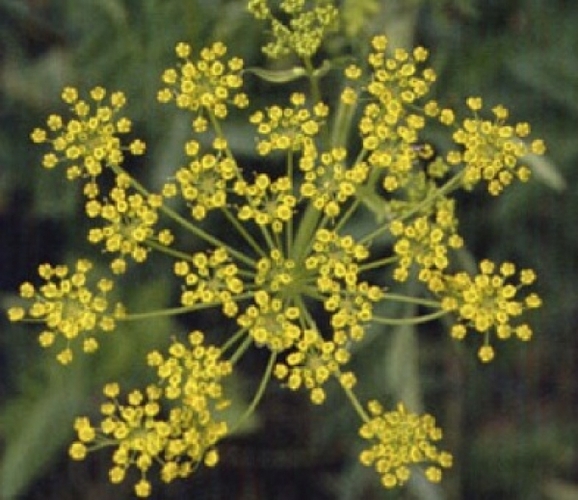BRATTLEBORO — If you have noticed plants by the roadside or on your favorite hiking trail that look like goldenrod or yellow Queen Anne's lace, they may be neither.
There is a new invasive plant species for Vermonters to be concerned about: wild parsnip.
Both the Vermont Agency of Agriculture and the Vermont Department of Health recently issued advisories on wild parsnip, also known as poison parsnip.
That's because the plant contains sap that can cause painful rashes and raised blisters when in comes in contact with skin. The reaction is usually intensified if skin exposed to the sap is exposed to sunlight for several hours.
Elizabeth Spinney, the invasive plant coordinator for the Vermont Department of Forests, Parks, and Recreation, says wild parsnip is easy to spot: The plant produces “small umbrella-shaped yellow flowers that look like Queen Anne's lace.”
The plant, a genetic mutation of garden parsnip, is a close relative of carrots, parsley, angelica, and giant hogweed, Spinney said.
“There is not a lot of research out there about this plant,” she said, “but we know it is stress tolerant, which means it is perfectly fine with harsher conditions, like drought.”
A dry June and July in southern Vermont has helped wild parsnip thrive in fields and roadsides. Since the plant is a biennial, Spinney said, when we see its yellow flowers, we are seeing its second year of growth, and it is well-established.
Spinney said this time of year is especially tricky. Farmers are set to do their second cutting of hay, and town and state highway crews are mowing roadsides.
“It's the only plant that you have to mow more than once to get rid of,” she said. “Once it goes to seed, one plant can produce hundreds of seeds, and like other invasives, if it doesn't have any natural enemies, it can really take off.”
Spinney said the best way to control wild parsnip is by spotting and uprooting the plants in the first year of their life cycle, usually in the spring.
“If you can recognize the plants early, you can get them out of the ground before they flower,” she said. “After a good soaking rain, you can pop the roots right out of the soil.”
If the wild parsnip plants are already flowering, a second mowing in the same summer will keep them from producing seeds after they regrow.
The Department of Health and the Agency of Agriculture offer this advice for anyone who encounters wild parsnip while mowing:
• Avoid contact with the sap.
• If you are cutting brush in areas where wild parsnip is flourishing, wear eye protection and clothing that covers your arms and legs. Wash any clothing that comes in contact with the sap.
• If you get sap on your skin, wash thoroughly with soap and water as soon as possible and protect exposed skin from sunlight for at least 48 hours.
• If you have a skin reaction, call your physician.
